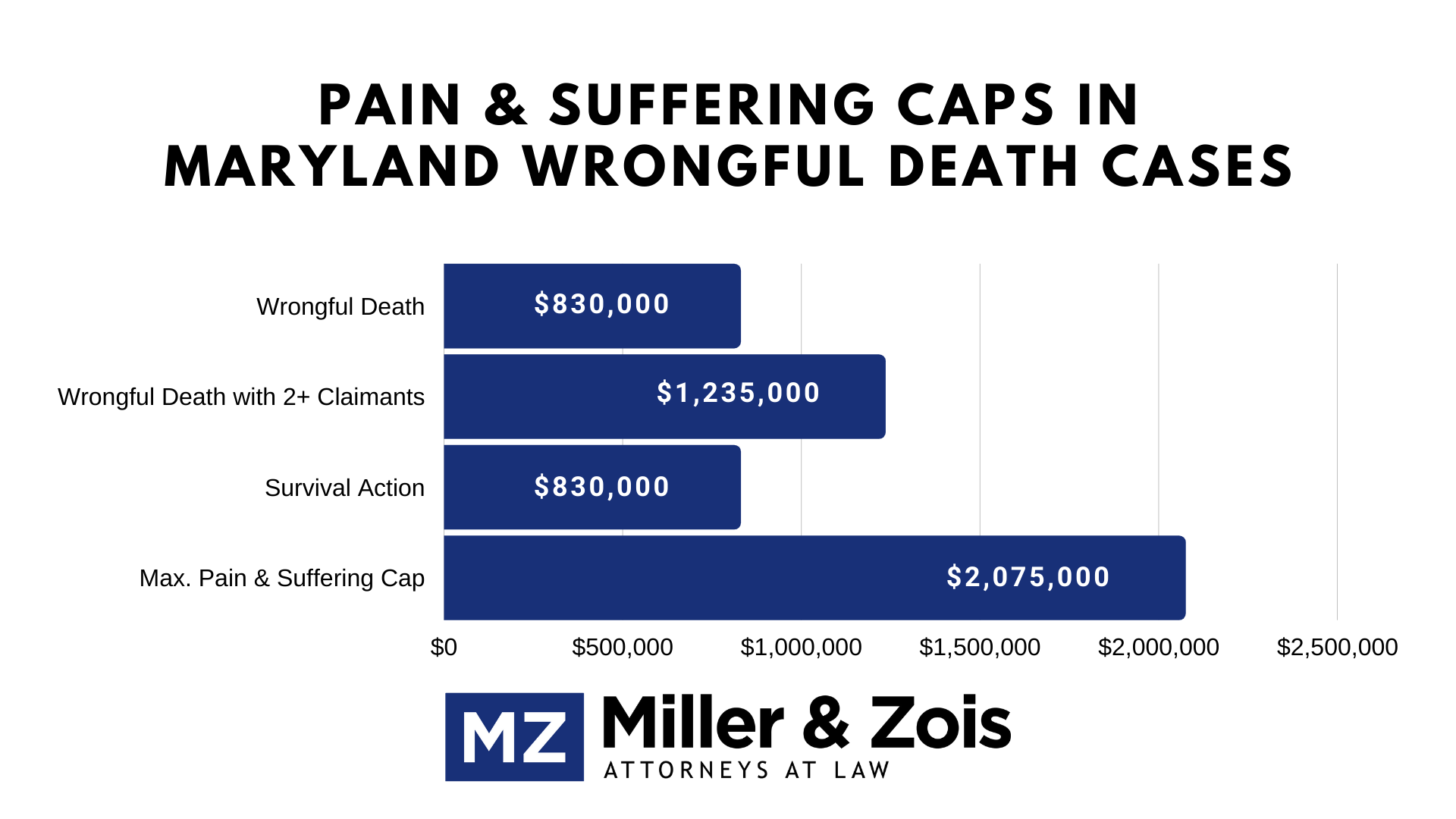If you are considering bringing a wrongful death lawsuit, one question may have is what is the most you can sue for in a wrongful death case?
The better question is how much money can a jury award you. Because in a wrongful death case in Maryland, you no longer ask for a specific amount of money in the Complaint. Assuming the plaintiff’s lawyer understands Maryland law, the days of the Baltimore Sun publishing a story about a $100 million wrongful death lawsuit are over. Today, we do not sue for a specific amount, but we ask for what a judge or jury deems just.
A wrongful death claim is a statutory cause of action governed by the specific rules of Maryland law. It bears repeating that actions for wrongful death in Maryland must be commenced within three years of the death of the injured person. To date, the Maryland General Assembly has only enacted exceptions for deaths caused by occupational disease and criminal homicide.
Pain and Suffering Cap in Maryland
There is a cap on how much the surviving family can claim in a wrongful death lawsuit. The 2017 pain and suffering cap in Maryland wrongful death cases is $830,000. The cap increases to $1,235,000 in wrongful death cases if there are two or more wrongful death claimants. There is another claim called a survival action for the pain and suffering of the victim that also has a cap of $830,000. All told, the maximum pain and suffering recovery in a Maryland wrongful death case in 2017 is $2,075,000. The cap increases every year and will increase again on October 1, 2017.
No Limit on Economic Loss
There is no limit on how much you can claim for economic loss. You can make an economic loss claim if you were the minor child or spouse of the decedent’s future projected wages. You can also make a claim if you are a wrongful death beneficiary, typically an adult child or parent who financially depended on the person killed.
How does this work? Essentially, the plaintiff has an expert witness who calculates the total lost compensation over the victim’s life. The expert uses tax returns or some other method of verifying the income and then projects how the victim would have progressed in his/her career. Some economists project wages until age 65, but some projections can go longer, particularly if there is evidence of intent of working longer. After that future income stream is captured and calculated, the forensic economist will calculate the present-day value of that income.
Maryland law measures economic damages “by the pecuniary or financial loss suffered as a result of the deprivation of the part of the earnings of the deceased.” But there is a limit to how realistic these projections must be. Lost wages must be “established with reasonable certainty, and must not rest upon speculation or conjecture.” So, you cannot speculate that a 20-year-old decedent would have been a major league ballplayer if he was a bench player at a small Division III college. But, you can make projections based on statistics of what a person with similar education and experience would likely earn over their life.
It is important to remember, particularly with the high cost of health care today, that there are also economic damages for the loss of benefits. Survivors can also make a claim for loss of household services. This is calculated by determining the cost of paying a professionally qualified person to perform the same services that the decedent performed for his wife, children, or other wrongful death beneficiaries. So if the decedent washed the dishes every night, it may entitle the family to the cost of hiring a cleaning service to wash the dishes.
Finally, families can claim any other out-of-pocket expenses as the result of the negligence that causes death, including medical bills and funeral expenses.
- How to bring the claim for benefits and household services
- New Maryland case law on bringing household services claims
Summary
Ultimately, the most you can recover for pain and suffering in a Maryland fatality case is $2,075,000. Economic losses have no cap but are limited by the expected wages, benefits, and household services that were reasonably expected of the victim. The economic loss also includes costs associated with the victim’s medical care and funeral expenses.
 Maryland Injury Law Center
Maryland Injury Law Center


